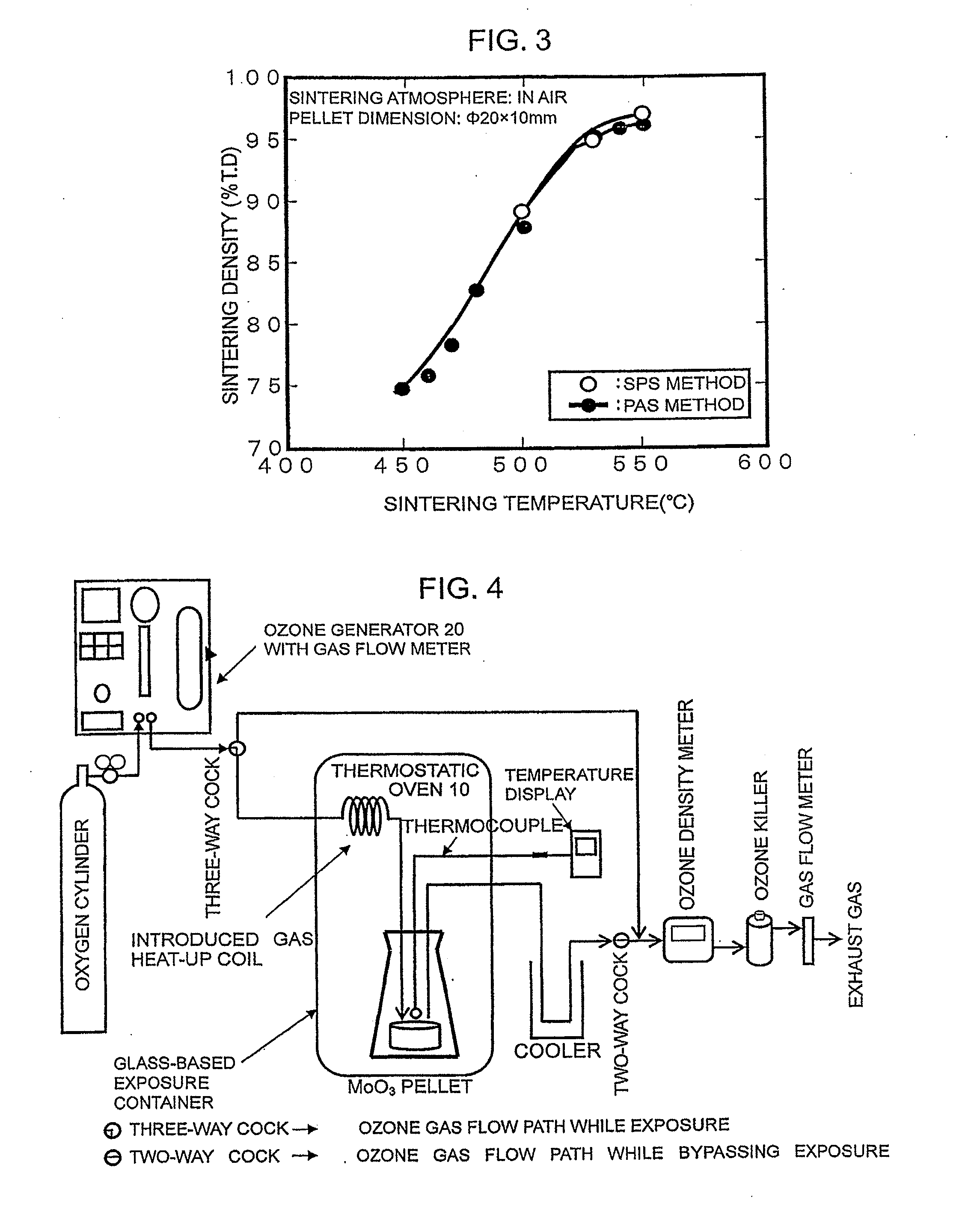Method of producing radioactive molybdenum
- Summary
- Abstract
- Description
- Claims
- Application Information
AI Technical Summary
Benefits of technology
Problems solved by technology
Method used
Image
Examples
Embodiment Construction
[0022]Referring to FIG. 1, the outline of a method of producing radioactive molybdenum (99Mo) solution is described. In Step 1, MoO3 powder is prepared (S101). As for such MoO3 powder, for example, high-purity MoO3 powder (99.99% (4N)), MoO3 powder containing enriched 98Mo intended for increasing the amount of produced 99Mo and the like may be used. In Step 2, MoO3 powder is sintered in the air by a plasma sintering method (SPS method or PAS method) in order to obtain high-density MoO3 pellets (S102). In Step 3, MoO3 pellets are oxidized in order to reduce the amount of insoluble content in the dissolving process in the final step (S103). In Step 4, oxidized MoO3 pellets are irradiated with neutrons, for example, in the nuclear reactor in order to produce neutron-irradiated MoO3 pellets (S104). In the last Step, neutron-irradiated MoO3 pellets are dissolved in a sodium hydroxide (NaOH) solution in order to obtain radioactive molybdenum solution (S105). The detail of each step will b...
PUM
 Login to View More
Login to View More Abstract
Description
Claims
Application Information
 Login to View More
Login to View More - R&D
- Intellectual Property
- Life Sciences
- Materials
- Tech Scout
- Unparalleled Data Quality
- Higher Quality Content
- 60% Fewer Hallucinations
Browse by: Latest US Patents, China's latest patents, Technical Efficacy Thesaurus, Application Domain, Technology Topic, Popular Technical Reports.
© 2025 PatSnap. All rights reserved.Legal|Privacy policy|Modern Slavery Act Transparency Statement|Sitemap|About US| Contact US: help@patsnap.com



